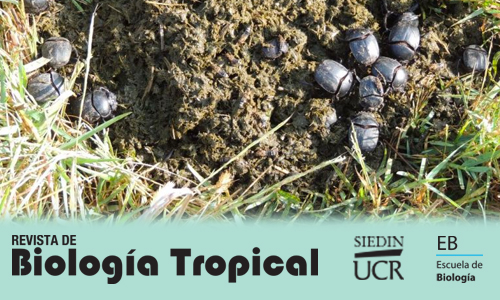Abstract
Introduction: Typically, research on dung beetles in the Tropical Dry Forests (TDF) of Colombian Caribbean region, have applied methodologies designed for wet or Andean areas of the country, which could be influencing the performance and efficiency of sampling. Objective: In order to contribute to this discussion, we analyzed how the bait amount and pitfall trap operating time influence the collection effectiveness of dung beetles in a TDF fragment at Reserva Campesina La Flecha, San Jacinto, Colombia. Methods: For the collection of beetles, we utilized pitfall traps baited with three different amounts of attractants: small (34.6 g), medium (53.8 g), and large (114.9 g), which remained active in the field for 48 h., 4 samplings between March and September 2015 were carried out, covering both, dry and rainy seasons. Results: A total of 4 563 individuals were recorded, grouped into 10 genera and 27 species of dung beetles. The highest values of richness, abundance and biomass were registered in the large bait, at 48 h, during the rainy season. However, the trap operating time had no effect on the estimation of beetles’ richness, abundance, and biomass, regardless of bait sizes. The three diversity orders (0D, 1D y 2D) showed similar values between the bait amounts during rainy season, but in the dry season, the largest baits displayed the highest diversity values. On the other hand, with the largest bait, significantly more richness, abundance, and biomass of small and large body beetles were registered, especially during the dry season. Conclusions: The results of this research show that, for the study of beetles’ assemblages in the BST, the use of a larger bait contributes to a better estimate of richness, abundance, diversity and biomass, especially during the dry season, when environmental conditions promote a more rapidly loss of baits attractiveness.
##plugins.facebook.comentarios##

This work is licensed under a Creative Commons Attribution 4.0 International License.
Copyright (c) 2022 Revista de Biología Tropical







